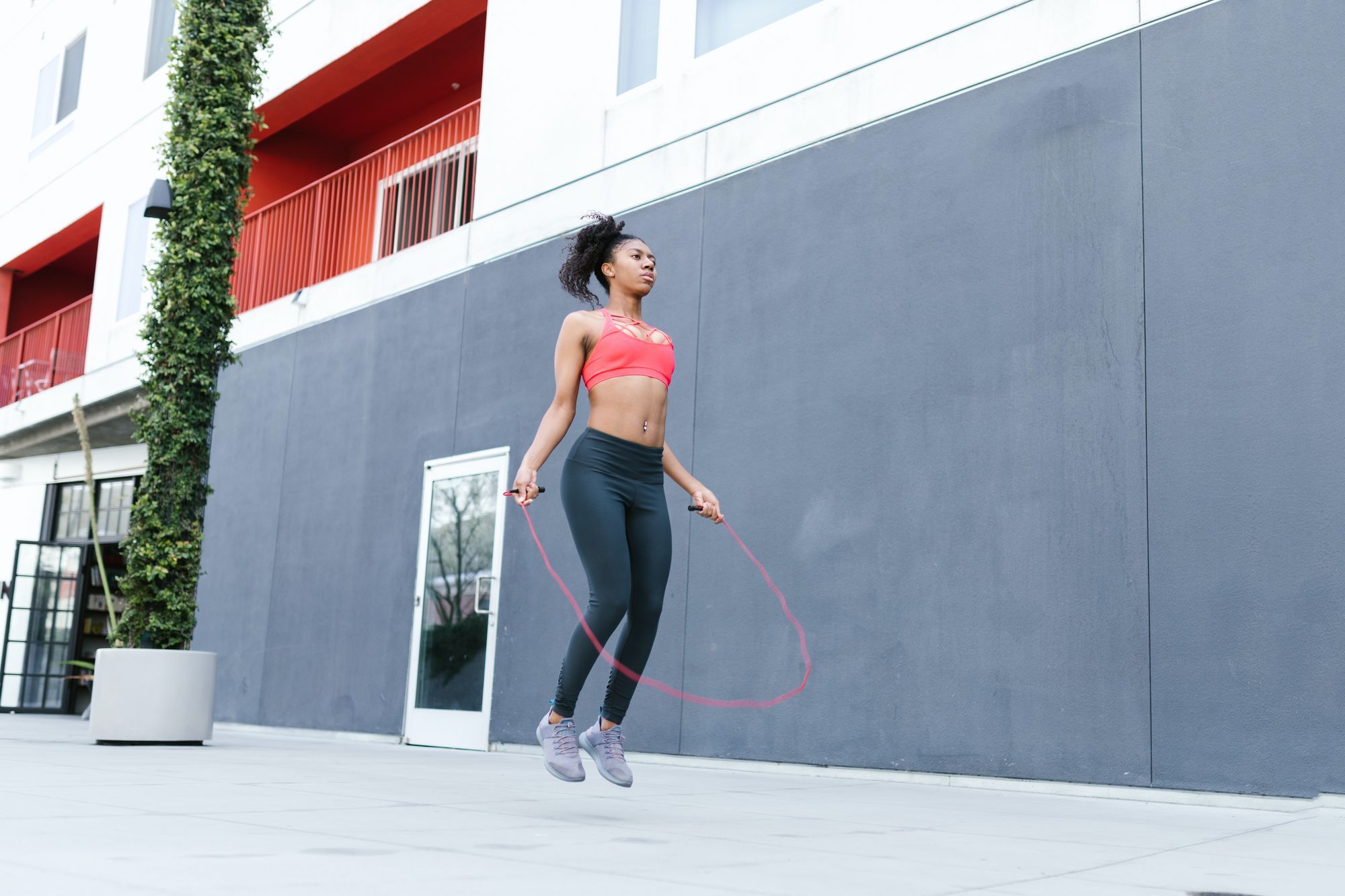How Skipping Rope Can Improve Your Health in Ways You Never Thought Possible

How to jump rope for beginners | 10 Benefits of skipping rope | Skipping rope disadvantages | In Conclusion | Frequently Asked Questions
When most people think of skipping rope, they probably think of a childhood game. However, skipping rope is actually a great way to improve your cardiovascular health at any age.
Skipping rope is a great way to get your heart rate up and burn calories. But did you know that jumping rope can also improve your coordination, balance, and bone density?
Not to mention, it's a great stress reliever! So let's take a look at some more ways skipping rope can improve your health.
How to jump rope for beginners
10 Benefits of skipping rope
It makes working out more enjoyable
Skipping ropes are linked to childhood, which might lead it to feel more enjoyable and distinctive from exercising on a treadmill or bike.
This can make it more likely that you’ll return to skipping rope as a form of exercise, making it one of the most sustainable workout methods.
It burns more calories than you think
Skipping rope for just 10 minutes can burn up to 200 calories. That’s because using a skipping rope is a great way to get your heart rate up, and it works your entire body – not just your legs.
It helps improve your bone density
Skipping rope is one of the best exercises you can do to improve your bone density and reduce the risk of bone fractures in later life. It’s also a low-impact exercise, which is gentle on your joints.
It’s a great stress reliever
Skipping rope is a great way to release pent-up energy and relieve stress. The rhythmic nature of skipping can help to clear your mind, and the endorphins released during exercise can improve your mood.
It improves your coordination and balance
Jumping rope requires coordination between your hands, feet, and eyes. It also improves your balance, which is important for preventing falls as you get older.
It’s a great way to improve your cardiovascular health
Skipping rope is a great way to improve your cardiovascular health. It strengthens your heart and improves blood circulation. In fact, skipping rope is even recommended by the American Heart Association as a way to improve your cardiovascular health.
Reduces your weekly workouts
Jumping rope might help you get in more exercise in less time. The Centers for Disease Control and Prevention (CDC) says that high-intensity activities like jumping rope are up to twice as efficient as moderate-intensity exercises.
So, if your primary form of exercise is jumping rope, you only need to record 75 minutes per week.
It's a great warm-up exercise
Skipping rope is a great warm-up exercise because it gets your heart rate up and helps to loosen your muscles. It also helps to improve your coordination and balance.
A study published in the International Journal of Sports Physiology and Performance found that endurance runners who replaced 5 minutes of their usual warm-up with jumping rope had a double increase in 3K time trial performance after 10 weeks.
It’s a very flexible exercise
You will get better at jumping rope if you put in the effort. Make sure to set goals for yourself and to keep track of your progress.
And, while a jump rope doesn’t look like much, it’s surprisingly versatile, allowing you do to a range of exercises from running jumps to HIIT workouts.
You can also do workouts that last for 30 seconds with a 30-second break in between. And, lastly, jumping rope is a great addition to other types of workouts.
It’s portable
A jump rope is an easy piece of exercise equipment to take on vacation because it is small, lightweight, and portable.
Once you reach your destination, you can either jump rope inside the place where you are staying or take it outside for a workout in the fresh air.
Skipping rope disadvantages
It can be repetitive
Jumping rope can become repetitive after a while, which might lead you to stop skipping altogether.
To avoid this, make sure to mix up your skipping routine by adding in different types of exercises, such as running or jumping jacks.
You need a good surface
Jumping rope requires a good surface to jump on. If you jump on a hard surface, it can put a strain on your joints and muscles.
It is best to jump on a smooth, level surface, such as a rubber mat or an indoor track.
You need space
Jumping rope also requires a lot of space. You need enough room to swing the rope around without hitting anything.
This can be a problem if you live in a small space, such as an apartment.
You need to be careful of your surroundings
When you are jumping rope, you need to be aware of your surroundings. If you jump rope outdoors, make sure there are no obstacles in your way, such as branches or rocks.
In Conclusion
So, as you can see, skipping rope has many benefits for your health. It’s a great way to burn calories, improve your bone density, relieve stress, and boost your cardiovascular health.
Jumping rope is a fantastic low-impact cardio activity and a great way to work on lower-body strength. You may burn calories, become sweaty, and make your legs ache.
However, given that most people can pay a few dollars for a rope, it is also readily available. It also doesn't require any complicated equipment or expertise to get started.
But one of the biggest perks of jumping rope—especially these days—is that you can easily do it at home.
Frequently Asked Questions
Calories burned skipping rope 1,000 times?
You can burn up to 200 calories in just 10 minutes of skipping rope. To calculate how many calories you’re burning while skipping, multiply your body weight in pounds by 0.11.
For example, someone who weighs 190 pounds x 0.11 = 20.9 calories burned a minute. So in 10 minutes, they would burn 209 calories.
Does skipping help you lose belly fat?
Skipping helps target both the subcutaneous and visceral fat around your stomach. In other words, skipping helps you lose both the fat you can see and the fat you can’t see.
How many times should I skip per day?
You should aim to skip for 10-20 minutes per day, 3-5 days per week. However, if you’re just starting out, it’s important to listen to your body and start off slowly. Jumping rope for too long or too often can lead to joint pain.

